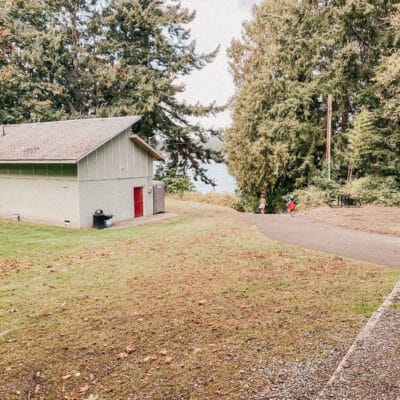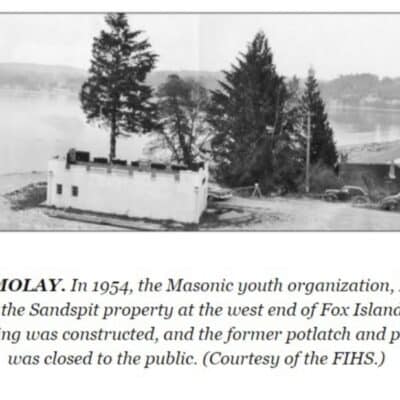Arts & Entertainment Community Environment
Two in Tow & On the Go | The history of the DeMolay club behind this PenMet park (Part I)
Arts & Entertainment Sponsor
Arts & Entertainment stories are made possible in part by the Gig Harbor Film Festival, a proud sponsor of Gig Harbor Now.
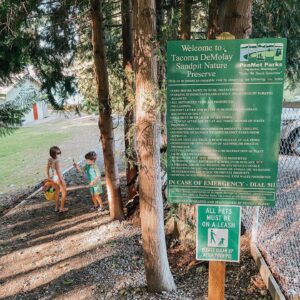
For those who missed it, the sandspit — known locally as Bella Bella Beach for the road it’s on — is approximately five acres of beachfront and surrounding park property on the northwest tip of Fox Island. Located at 55 Bella Bella Drive, the site shifted from private to public land in 2010, after PenMet Parks purchased it from a local organization and made it a nature preserve.
The sandspit’s stunning surroundings and off-the-beaten-path location make it widely adored by families, photographers, and cute couple retirees who set up side-by-side lounge chairs at the tideline to watch the sunset dip into the vast horizon.
Clara, Wyatt and I love the DeMolay Sandspit for its patch of fluffy “real” sand to the east, its claybaby finds to the west, and, of course, the kid-friendly low-tide swimming cove at the walk-d0wn kayak launch point. (TIP: Watch those ankles for super-ouchie lion’s mane jelly fish that love the cove! Check out what the slimy rusted-orange colored creatures look like via the awesome local Harbor WildWatch peeps).
Yep, Tacoma DeMolay Sandspit is a slice of Washington geography that’s truly special around here — and unlike any place we’ve ever been — which is why I shared all the fun stuff about it with you last fall. But, what I didn’t disclose at that time, is that the beach also has a distinctly intricate history to the local area’s social, economic, and cultural ties — one filled with mystery and intrigue. Namely, in its past relationship to … a secret society.
Have I got you hooked yet? Read on.
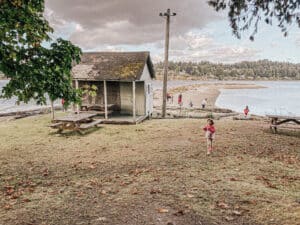
In fact, the group’s social structure operated off ideals that originated from the medieval Knights Templar (hello, Curse of Oak Island fans!).
From playing nighttime games of a battle-hide-and-seek game called “manhunt” to building bonfires that towered so high, folks from several miles away called the fire department, the Masonic Order of the DeMolay’s Tacoma chapter had the sandspit on lock for its exclusive membership of young men ages 12 to 21 throughout the 1900s. The boys even made headlines in 1934s for their “odd midnight” initiation ceremonies after ferry steamers shipped them across The Narrows for a special session of overnight oath-taking.
The Freemasons
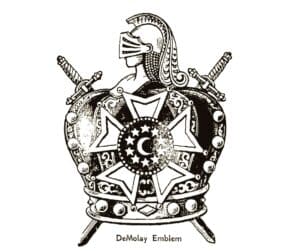
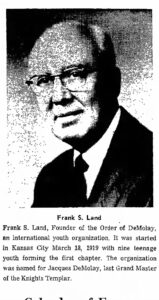
As Tacoma’s modern-day DeMolay chapter describes online: “(Frank) thought: ‘how lonely it must be for a boy not to have a man to talk with, or a man to provide some type of inspiration and direction,'” according to the club’s website, “(He wanted to see) Masons taking interest in the young people, being a friend to them, advising them, and perhaps even providing them with employment opportunities.”
It seemed important to Land that these sons of wartime widows had a patriarchal influence to be solid citizens. And with it, came all the Masonic traditions of ranking order, secret handshakes and step-by-step instructional ceremonial handbooks that folks on the outside don’t quite grasp the full extent of. As it turns out, Land’s idea was well received. Soon, hundreds of DeMolay chapters popped up worldwide — like this one in Massachusets — all teaching civic awareness, personal responsibility and leadership. Over the years, many of these chapters churned out responsible young men with keen interests in leading one field or another. Some even boasted fancy alumni like famed animator Walt Disney, actor John Wayne, and broadcast journalist Walter Cronkite.
Maybe that’s why the Tacoma chapter, as well as others — though notably less mainstream — are still active today, 105 years later.
The DeMolay name
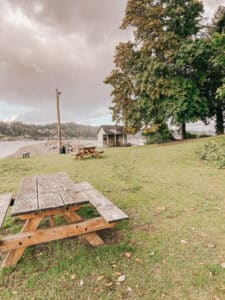
Tacoma DeMolay Sandspit, westside picnic are. 2022. The building in the background has since been torn down.
After his initial pitch, Land got a group of interested boys together to share “tales of Biblical heroes, knights, and crusaders,” author Daniel Coleman wrote in Land’s biography held at the Kansas City Library. Land often preached from the Bible in his younger years, but belief in any one God or relgion was never a DeMolay membership requirement. The boys did, however, have to acknowledge the existence of a higher power. That appears to still be the case today.
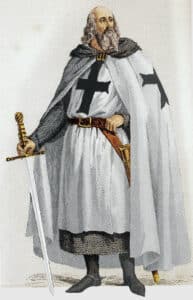
Jacques DeMolay | 1850 Public Domain illustration via Wikimedia Commons.
Out of all his stories, Land’s founding chapter leaned into one particular acocunt the most – that of Jacques DeMolay. He was the last grand master of the Knights Templar, a medieval military order tasked with protecting Christians during the Crusades. The knights became so powerful that eventually King Philip IV of France deemed them traitors so he supposidly didn’t have to replay his financial debts to their order. As the story goes, the Knights Templar were wrongly imprisoned, accused of things they didn’t do, but nevertheless banded together until the very end when they were executed in Paris. Playing up the Templar principals of responsibility and brotherhood, the founding boys club members took de Molay’s last name, apparently spelling it slightly different. It’s said that Freemasons often adopted Templar ideals in their ritutals and traditions. The Order of the DeMolay ate those stories right up and were no exception.
Side note: The BBC published this truly fascinating article about how groups of medieval craftsmen morphed a common stonebuilder trade association into the multi-layered six-point-star/all-seeing-eye/knights and crowns and temples/quasi-religious/mystic shrine/secret handshake institution of labyrinthine-level intricacies that Freemasonry eventually became.
The Tacoma chapter at the Fox Island sandspit
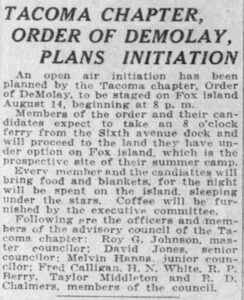
The Tacoma Daily Ledger, Aug. 6, 1926, via Newspapers.com
In the 1920s, Tacoma’s DeMolay chapter staked their claim on the Fox Island sandspit as an overnight camp away from the big city lights. In fact, the chapter’s use of the beach was mentioned in an Aug. 6, 1926 edition of the Tacoma Daily Ledger with references to an “open-air” initiation ceremony and sleeping “under the stars.”
That story (at left) reads:
“An open air initiation has been planned by the Tacoma chapter Order of DeMolay to be staged on Fox island August 14 (1926) beginning at 6 p.m. Members of the order, and their candidates, expect to take a 6 o’clock ferry from the Sixth Avenue dock and will proceed to the land they have under option on Fox island which is the prospective site of their summer camp. Every member and the candidates will bring food and blankets – for the night will be spent on the island sleeping under the stars. Coffee will be furnished by the executive committee …”
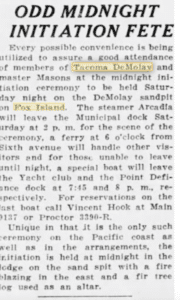
The Tacoma Daily Ledger, June 23, 1934, via Newspapers.com
Another Tacoma Daily Ledger story published June 23, 1934 reported further masonic happenings on the sandspit, this time that “every possible convenience is being utilized to assure a good attendance of members of Tacoma DeMolay and master Masons at the midnight initiation ceremony to be held Saturday …” with four ferry boat departures from the city to the spit reserved for members and their friends and family.
It’s interesting that reporters even back then – 90 years ago – were also intrigued by the DeMolay sandspit activities, for the article continued to say, “Unique in that it is the only such ceremony on the Pacific coast as well as in the arrangements, the initiation is held at midnight … on the sand spit with a fire blazing in the east and a fir tree log used as an altar.”
“Summer camp”
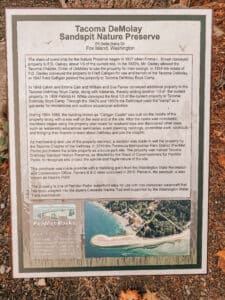
This PenMet sign on the sandspit site has some great historic details about the beach’s history.
Some readers may be wondering, like I first did, just how these boys got exclusive rights to such a nice stretch of beachfront property. From what I’ve gleaned from PenMet’s historical reports, backed by my own late-night crazy person research, the spit was chosen because about a third of what exists as the property today was owned by Masonic advisors who passed down their parcels through the generations for the DeMolay’s specific benefit. That is, until the club itself eventually took over the deed in the 1950s or 60s. In all, the sandspit as official DeMolay land lasted an impressive 70 years before the club sold it to PenMet in 2010.
While other folks owned parcels on or near the sandspit (a sign on site, pictured to the right, lists several property owners’ names) — it appears that perhaps the first Mason-related property owner was F.D. Oakley, a prominent Tacoma lawyer. In the 1930s, news reports place Oakley in the position of inviting the DeMolay boys from his Masonic temple in Tacoma to travel out to his rural beach for a summer getaway. Back then, news articles even called the sandspit “the camp” or “the boy’s camp” because the DeMolay used the land for its popular campouts so often.
Back then, Fox Island was very much considered a rural camping destination as the Tacoma kids had to either take a ferry there or physically row a boat out to the sandspit and sleep outside until a blockhouse was built. More on that below.
Fred Calligan of “Calligan’s Castle”
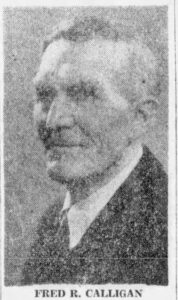
Source: Tacoma News Tribune, Feb. 20, 1954 via Newspapers.com
After Oakley died in March 1934 at age 57 from a long illness, his estate conveyed the sandspit to his fellow Tacoma Mason friend, Fred Calligan. With it, came the request for the DeMolay’s continued use there. That was A-OK for Calligan, a longtime member of Tacoma’s Scottish Rite, an organization that remained a steadfast sponsor of the boys’ chapter for years and years. Calligan himself turned out to be an intrinsic player in the DeMolay’s history there — maintaining his position as the kids’ trusted “dad adviser” for two decades. Even that initial 1926 article referenced above says Calligan was a “junior councilor” to the DeMolay near its very beginning.
Calligan was also quite the character. He made his fortune mining for gold in the rugged terrain of Alaska during the Klondike Gold Rush at the turn of the century.
“Yes, this grizzled gold miner, with his penetrating eyes and his quizzical smile, toiled and moiled for the precious metal for a decade, but it hurt him not at all. As he is alert and active and by no means lives a life of ease with his hands folded in his lap,” a Tacoma News Tribune reporter so charmingly wrote about Calligan in a Nov. 23, 1947 news feature on him.
The article goes on to say that Calligan moved from Maine to Tacoma in 1889 to work for the Northern Pacific Railroad. He and his wife, Erba, married in the city on July 26, 1891 (and celebrated their golden wedding anniversary 50 years later). When the railroad workers went on strike in 1894, Calligan left the business and opened a market with Tacoma business partner Frank Glass. They opened the Imperial Market at 323 E. 26th St. But when the Klondike Gold Rush hit, Calligan and his famly left the city in 1900 to stake their claims north. They decided to stay 10 years there, living in a rural cabin and mining for gold, before returning to Tacoma. It was around that time when he began his important role within Tacoma’s Scottish Rite. He served as its Almonor, the person who distributes the temple’s charitable donations to the public, just like DeMolay founder “Dad Land” did before him.
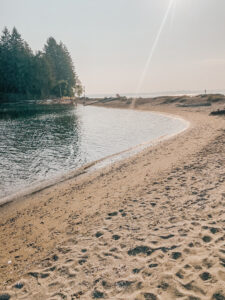 Calligan, like Oakley, was also what’s known as a “Master Mason,” which earned him a top spot in Tacoma’s Masonic hierarchy. During his time leading the DeMolay, according to his obituary, Calligan was honored for his youth work in 1946 when the Scottish Rite built a $7,500 lodge for the boys and designated it the “Fred R. Calligan Lodge.” This Tacoma News Tribune article from May 22, 1947, says of the building project:
Calligan, like Oakley, was also what’s known as a “Master Mason,” which earned him a top spot in Tacoma’s Masonic hierarchy. During his time leading the DeMolay, according to his obituary, Calligan was honored for his youth work in 1946 when the Scottish Rite built a $7,500 lodge for the boys and designated it the “Fred R. Calligan Lodge.” This Tacoma News Tribune article from May 22, 1947, says of the building project:
“This lodge has long been a hope of Fred R. Calligan, a longtime fraternal enthusiast in Scottish Rite Masonry. And he has brought along into this present building project the hopes and

Source: Fox Island Historical Society Museum
desires as passed along to him by the late Frank D. Oakley. A sufficient appropriation has been made by the Tacoma bodies of Scottish Rite for the building of this recreational lodge for Tacoma chapter of the DeMolay.”
Later, the building became affectionately known as “Calligan’s Castle” for the next few decades, before becoming “the blockhouse” as it’s known today. Not only was the building named after Calligan, but the road leading up to the spit was named after Calligan, too. Except, nowadays everyone knows the street leading up to the sandspit is Bella Bella Drive, which is where the beach’s local nickname comes from. It looked like evidence of “Calligan Road” had all but dissapeared. So I ventured to the Fox Island History Museum to see if they had any older local maps that still sported Calligan’s name on the island’s north side. And guess what? I found one! I don’t have the date for it, but the map shows Calligan Road and Bella Bella Drive on either side of the same street concurretly. Or, the two names may have represented different parts of the same road. In either case, it was fun to see his name on an actual map just like the old newspapers said I would.
- Calligan’s Castle, 2023, Tonya Strickland
- Calligan’s Castle, 1954, PenMet Parks via the Fox Island Historical Society
The lodge, the last remaining DeMolay structure at the Fox Island sandspit today, was constructed with cinderblocks. At the beginning, its roof was flat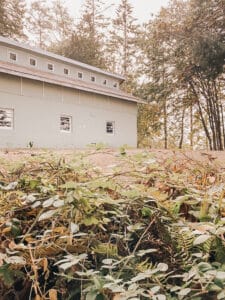
Regarding the black and white picture above – there are very few publicly available photos of the sandspit for all the years I’m writing about. So you bet I was elated to find a 1950s image credited to the Fox Island Historical Society enclosed within PenMet’s master plan report. It shows a mid-century Calligan’s Castle with its origional flat top and castle-like uppers before a second story was added on in the 1990s. Also surprising? How few trees there were compared to today! On the east side, you can also see the roof of the DeMolay’s former caretakers house peeking up below the ridgeline. Over the years, that house people moved out, the top caved in and so the bats took over. PenMet tore the house down recently.
Reader Zak Smith of Fox Island

After Calligan’s Castle was completed, the signage on site says “members began using the property year-round for weekend trips and discovered other uses such as leadership educational seminaries, event planning meetings, committee work, cookouts and bringing their friends to learn about DeMolay and join the chapter.”
… stay tuned for Part II on this story tomorrow you, too, can hear more about the chapter — from actual former members. (Read it here.)

Tonya Strickland is a Gig Harbor mom-of-two, longtime journalist, and Instagram influencer in the family and travel niche. Her blog, Two in Tow & On the Go, was recently named among the 10 Seattle-Area Instagram Accounts to Follow by ParentMap magazine. Tonya and her husband Bowen moved to Gig Harbor from California with their two kids, Clara (9) and Wyatt (7) in 2021. Find them on Facebook for all the kid-friendly places in and around town.


